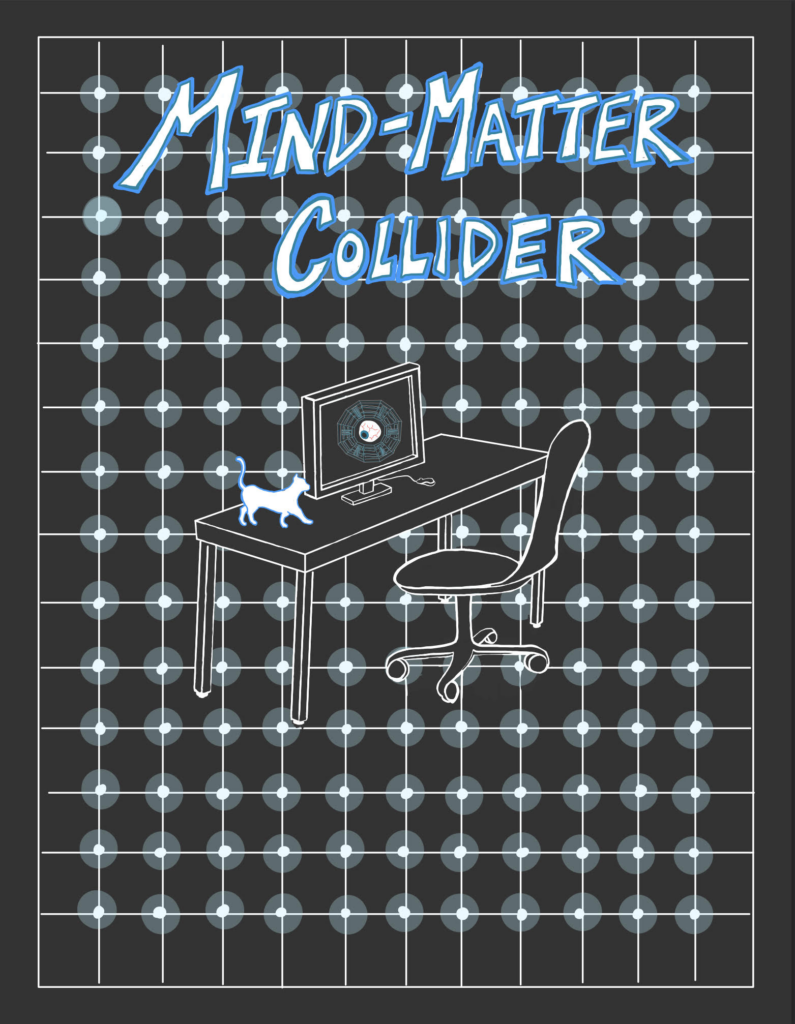Author: Octavian Ianc, University of Bucharest, Romania

Imagine that you are a researcher at CERN. Some of you already are, others have this on their schedule a few years in the future. Now, what are you doing there? Among other things, you’re analyzing hundreds of petabytes of experimental data. Assuming that you’re a sane person who doesn’t want to spend the next few million years stuck in front of a computer, you don’t do this by hand. You use some machine learning algorithms¹. These algorithms are artificial, no one has seen classifiers growing in trees. And, if my university lecturer did not make up definitions out of thin air, they are, in a way, intelligent.
Dramatis personae: artificial intelligence and physics.
It all began in the last few years, when lots of commercial AI implementations became available. Actually no, it began in 1997, when Deep Blue beat Kasparov in chess. Or in the 50s, when Turing wrote something about tests and machines. No, even earlier, with those philosophers babbling about formalizing logic and reasoning. It’s almost impossible to come up with a definite answer regarding when the idea of artificial intelligence appeared. What’s certain is that things which someone from 50 years ago would have considered as intelligent are around us. For now, and probably for ever.
We’re physicists: dedicating our lives to studying the different phenomena that surround us. Wouldn’t it be, and this is a huge understatement, absolutely crazy if one of these phenomena turned everything around and started studying us? We’ll get there soon, let’s take it gradually.
Marvin Minsky, one of the pioneers of the field, defines artificial intelligence as “the science of making machines do things that would require intelligence if done by men”². This encompasses a lot of stuff. While not being the first things you think of, sorting a list of numbers or navigating through a network are tasks that would require a fair share of human intelligence. Those are boring, we won’t talk about them. We only want true intelligence here. So we’ll have true intelligence. And also physics. And cats – everyone loves cats.
As you’ve noticed by now, intelligent algorithms are a cornerstone of modern research, both in physics and in most other fields, especially when it comes to finding hidden patterns in huge datasets. An algorithm is better, faster, and does not get bored nearly as quickly as we do. Another important field where AI is a great competitor to traditional approaches is in the modelling of complex systems. When talking about predicting molecular properties³, predicting weather⁴ or, analysing complex economic parameters⁵ (why not?), artificial intelligence is able to do some feats for which classical methods need orders of magnitude more time or are outright incapable of.
This link between physics and the thing called artificial intelligence is however nothing new. From the 70s, researchers worked on something which would later be called a Hopfield network⁶, named after J.J. Hopfield, a physicist who brought this into attention. Until then, everyone thought information had to be stored in a straightforward way: words written on a piece of paper, 1 or 0 bits in a hard drive, and so on. What these guys did was to prove this is not always the case. You can also store information using the connections or couplings between elements of a system. In a nutshell, these networks are very similar to the Ising model for magnetism, in fact they’re inspired from it. You have a grid of tiny magnets which can point either up or down, and are coupled between each other. If the coupling strengths are suitable and the system is left to evolve, it will converge, from any initial state, in one or a few chosen states (“memories” of the system).
Now, memory, intelligence, analyzing tons of data in a blink of an eye, all those don’t sound horrible at all. ChatGPT helping with that pesky programming task sounds even better. Yet, as one famous economist put it, ‘There ain’t no such thing as a free lunch’. All these shenanigans come with their fair share of disadvantages and problems.
First of all, to put it frankly, we have no idea what most of these algorithms are doing, or why they are giving a certain output. This is especially true about deep neural networks, the workhorses of a lot of machine learning applications. As a simple example, we can take any task which has something to do with images (finding faces, classifying cats etc.)⁷. These are, most of the time, accomplished with convolutional neural networks (CNNs). Different operations are sequentially applied to the image’s pixel values, ending up with the desired result (a number, a category, whatever). Let’s say we try to analyze such a system. The first layer or couple of layers are quite easy to understand: they detect edges, gradients, basic image features. Surprisingly, this is extremely close to how our visual system does its job. However, if we try to go past this, we’re more or less stuck⁸. It’s quasi-impossible for a researcher to get even a general idea about why the network does what it does. All we see is some numbers. If you have seen the movie Inception (if not, you definitely should), it’s kind of like that. There, the protagonists are navigating through an intricate world, which interconnects levels of reality with dreams. Understanding a deep neural network is similar, but we’re still stuck in the uppermost levels.
Let’s get a bit more intellectual, calling in some philosophy. At its core, any software piece we could refer to as intelligent is nothing more than a set of mathematical rules that is applied to data collected from the real world. When something like this is capable of doing independent research, what happens exactly?
A point can be made even aiming at the fundamentals of the scientific method. Suppose we analyze experimental data using an AI. We obtain predictions, we can verify those predictions. However, what we’re doing is that we’re morphing an unknown, the physical phenomenon we’re trying to study, into a different one, the model that was trained on that data. Although we can, in a sense, predict the real phenomenon, we still don’t have the vaguest of ideas about the governing laws. We just have a black box that supposedly can predict it. Although we have some results, is this still science? This looks similar to the differences between science and engineering. Very broadly, a scientist is interested in understanding phenomena, while an engineer aims to harness these phenomena and provide useful results, while still keeping at least a general understanding of the process at hand. When using an AI model to analyze data and make predictions, we’re most of the time losing even that general understanding. One might dare to say this is neither science, nor engineering.
We’ve traditionally referred to mathematics as a man-made tool, which we use to harness the unpredictability of the world around us. The weirdness happens when this math starts creating other math. The mere idea that it is a tool, stemming from our minds and being entirely dependent on it, begins to shatter when this math starts doing stuff without us. It’s as if a hammer would start building by itself. Or as if a cat from your dream would scratch you in real life. There’s even more to this. Gödel’s incompleteness theorems⁹, important results of mathematical logic, state that if you start with a finite number of assumptions (axioms), you would be unable to prove all true propositions of that logical system. As a consequence, you won’t be ever able to prove or disprove that system as consistent. For our AI-scientist, this would mean that it, by the virtue of its own existence, places hard limits on its abilities. For us humans, limitations come mostly from the physical world. I can’t run at 500 km/h because the muscles in my legs are not strong enough, due to air resistance etc. For mathematics (and, as a consequence, physics), the mere fact that it exists creates a constraint on itself.
To sum it all up, the marriage of artificial intelligence and physics has and will continue to revolutionize the way we do research, and not only that. In the midst of these scientific and philosophical ponderings, we find ourselves both awe-inspired and cautious, marvelling at the possibilities while recognizing the need for responsibility.
References:
2. Minsky, “Semantic Information Processing.”
3. Wiercioch and Kirchmair, “DNN-PP.”
4. Hickey, “Using Machine Learning to ‘Nowcast’ Precipitation in High Resolution. | ai.googleblog.com.”
5. Bickley, Chan, and Torgler, “Artificial Intelligence in the Field of Economics.”
6. Hopfield, “Neural Networks and Physical Systems with Emergent Collective Computational Abilities
7. “Deep Learning (Adaptive Computation and Machine Learning Series): Goodfellow, Ian, Bengio, Yoshua, Courville, Aaron: 9780262035613: Amazon.Com: Books.”
8. Zhang et al., “A Survey on Neural Network Interpretability.”
9. Gödel, “On Formally Undecidable Propositions of Principia Mathematica And Related Systems.”
